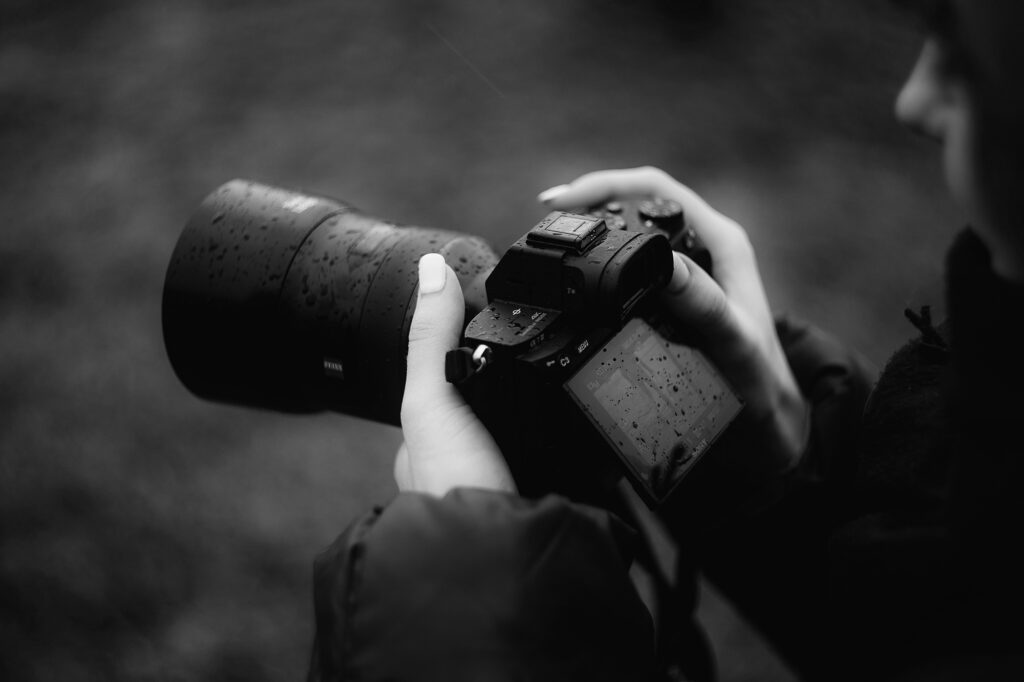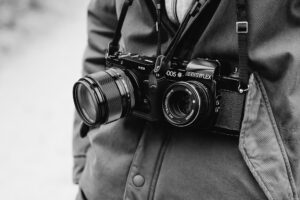Whether you’re capturing a travel vlog, filming a short documentary, taking portraits, or shooting nature reels, your camera is your most valuable tool. But bad weather, rough terrain, or long shooting days can easily damage your gear if you’re not prepared. This comprehensive guide will teach you how to protect your camera and essential equipment so you can confidently create content anytime, anywhere.
TL;DR
- Heat: Keep camera shaded; avoid direct sun and hot cars. No sudden cooling.
- Cold: Batteries die faster; avoid quick warm-ups to prevent condensation.
- Rain/Snow/Fog: Use covers or rain sleeves. Pack silica gel in your bag.
- Dust/Wind: Use filters. Never change lenses or cards outdoors.
- Drops: Use straps and lens caps. Consider shockproof cases.
- Theft: Use discreet, secure bags. Stay alert in public.
1. Protecting Your Camera in Hot Weather
Direct sunlight and high temperatures can cause sensors to overheat and permanently damage your camera. Always keep your camera out of direct sun:
- Use your own shadow, a hat, reflector, or cloth to create shade.
- Avoid leaving the camera in a hot car or exposed on a seat.
- Take breaks during extended shoots in +35°C weather.
- Never cool your camera rapidly (e.g., fridge, wet towel). It may cause severe internal damage.
Bonus Tip: Sunscreen is great for you, but terrible for gear. Always wash your hands after applying it to avoid transferring oils onto the camera body.
2. Shooting in Cold Weather
Cold weather presents two main risks: reduced battery life and condensation.
- Wrap your battery compartment in cloth to help retain heat.
- Keep extra batteries in your inner coat pocket to warm them up.
- Avoid turning on the camera immediately after moving from cold to warm areas, condensation inside the lens or body can be destructive.
- Let the gear warm up slowly inside its bag to reduce condensation risk.
Unless your gear is fully weather-sealed, shooting in extreme cold always involves risk.
3. Creating Content in Rain, Snow, or Fog
Water can destroy your camera if it seeps inside. Here’s how to protect it:
- For light rain: Create a temporary rain cover using a plastic bag and rubber band.
- For longer shoots: Use a dedicated rain cover or waterproof jacket.
- For professionals: Invest in a waterproof camera housing, great for stormy scenes or underwater work.
Bonus Tip: Keep silica gel packets from electronics and toss a few in your gear bag to absorb extra moisture.
4. Shooting in Windy or Dusty Conditions
Dust particles and sand can scratch lenses and jam camera components.
- Always use a filter (e.g, UV filter) to protect your lens front.
- Never change batteries, memory cards, or lenses in open windy environments.
- After shooting, clean your lens and sensor carefully.
- Consider waterproof/dustproof housings for extreme conditions.
5. Avoiding Damage from Drops and Impacts
Accidents happen. Here’s how to reduce the risk:
- Always use a sturdy neck strap or wrist strap.
- Use a lens filter and/or lens cap when the camera isn’t in use.
- Invest in padded or impact-resistant camera cases.
- Consider silicone cases for added grip and basic shock absorption.
6. Preventing Theft
Gear theft is a major concern, especially when traveling or filming outdoors.
- Choose a bag with hidden or lockable zippers.
- Opt for bags that don’t obviously look like camera bags.
- Always keep your gear in sight or strapped securely to you.
- Avoid changing lenses or displaying equipment in crowded or sketchy areas.
These protection tips become even more useful when you’re filming alone. See how this fits into a One‑Man Studio setup.
Last Words
As a content creator, protecting your gear ensures you can keep creating without costly interruptions. A few preventative steps can save you from expensive repairs or total gear loss. Treat your camera like the creative partner it is: keep it safe, and it’ll serve you well.
Want to keep learning? Follow me on your favorite social media (handle everywhere: @MediabyHamed / search for Hamed Media) or subscribe to my newsletter for more practical tips and guides like this.
FAQ
How should I store my camera when not in use?
In a dry, dust-free environment like a padded bag or cabinet with silica gel for moisture control.
What’s the best way to clean a camera lens?
Use a blower, lens brush, and microfiber cloth. Avoid touching the glass with fingers.
Is a camera strap necessary?
Yes, it helps prevent accidental drops and improves handling.




